2023: A Moment of Truth for Global Displacement
2023: A Moment of Truth for Global Displacement
A six-year-old girl helps her older sisters weave a carpet as their only means of supporting their family living on the outskirts of Kabul, Afghanistan, after being displaced from Daikundi Province, 7 November 2022. UNHCR/ Oxygen Film Studio
In the first months of 2022, the number of people forced to flee war, violence and persecution worldwide surpassed 100 million for the first time. Any hope this would represent a high-water mark for global displacement was soon dashed as the total continued to rise, reaching 103 million by mid-year, driven by the war in Ukraine and unresolved crises in other parts of the world.
Far from being shocked into action, the international community has so far been unable to resolve the conflicts and other causes of displacement that have forced so many millions to flee their homes. This continued inaction, combined with the growing effects of the climate emergency, spiralling costs of living and looming global economic recession, means the outlook for global displacement in 2023 appears bleak.
And yet, even though many of the greatest challenges in the year ahead will be continuations of existing humanitarian emergencies, we do not have to be bound by the past. We can seek ways to share responsibility for the protection and well-being of refugees, internally displaced and stateless people. This coming December will provide an opportunity to do just that as governments, charities and NGOs, the private sector and many others join representatives of displaced communities for the second Global Refugee Forum.
Below follows a snapshot of some of the most critical situations likely to determine whether last year’s record displacement figure was just another data point on an inexorable upward trend, or a moment when the tide began to turn.
In the first months of 2022, the number of people forced to flee war, violence and persecution worldwide surpassed 100 million for the first time. Any hope this would represent a high-water mark for global displacement was soon dashed as the total continued to rise, reaching 103 million by mid-year, driven by the war in Ukraine and unresolved crises in other parts of the world.
Far from being shocked into action, the international community has so far been unable to resolve the conflicts and other causes of displacement that have forced so many millions to flee their homes. This continued inaction, combined with the growing effects of the climate emergency, spiralling costs of living and looming global economic recession, means the outlook for global displacement in 2023 appears bleak.
And yet, even though many of the greatest challenges in the year ahead will be continuations of existing humanitarian emergencies, we do not have to be bound by the past. We can seek ways to share responsibility for the protection and well-being of refugees, internally displaced and stateless people. This coming December will provide an opportunity to do just that as governments, charities and NGOs, the private sector and many others join representatives of displaced communities for the second Global Refugee Forum.
Below follows a snapshot of some of the most critical situations likely to determine whether last year’s record displacement figure was just another data point on an inexorable upward trend, or a moment when the tide began to turn.
Ukraine
As the full-scale invasion of Ukraine approaches the one-year mark, nearly a third of Ukrainians have been forced to flee their homes. This includes 5.9 million people who are displaced inside the country and who, together with those who have remained in their homes in frontline and other areas, now face plummeting winter temperatures and prolonged electricity and heating outages as the country’s critical infrastructure comes under attack. If the war continues and attacks on electricity, heating and water supplies persist, more people may be pushed to join the 7.9 million Ukrainians who have already sought refuge across Europe. Helping those affected by the war inside Ukraine, including ensuring they have warm and dignified living conditions, will require a massive collective response from government, humanitarian agencies, local partners, international donors, and the private sector.
Galyna, 72, sits near a kerosene lamp in an effort to stay warm. Her home in P’yatykhatky village, in Ukraine’s Kherson region, has no electricity, 19 November 2022. ©UNHCR/Diana Zeyneb Alhindawi
Ukraine
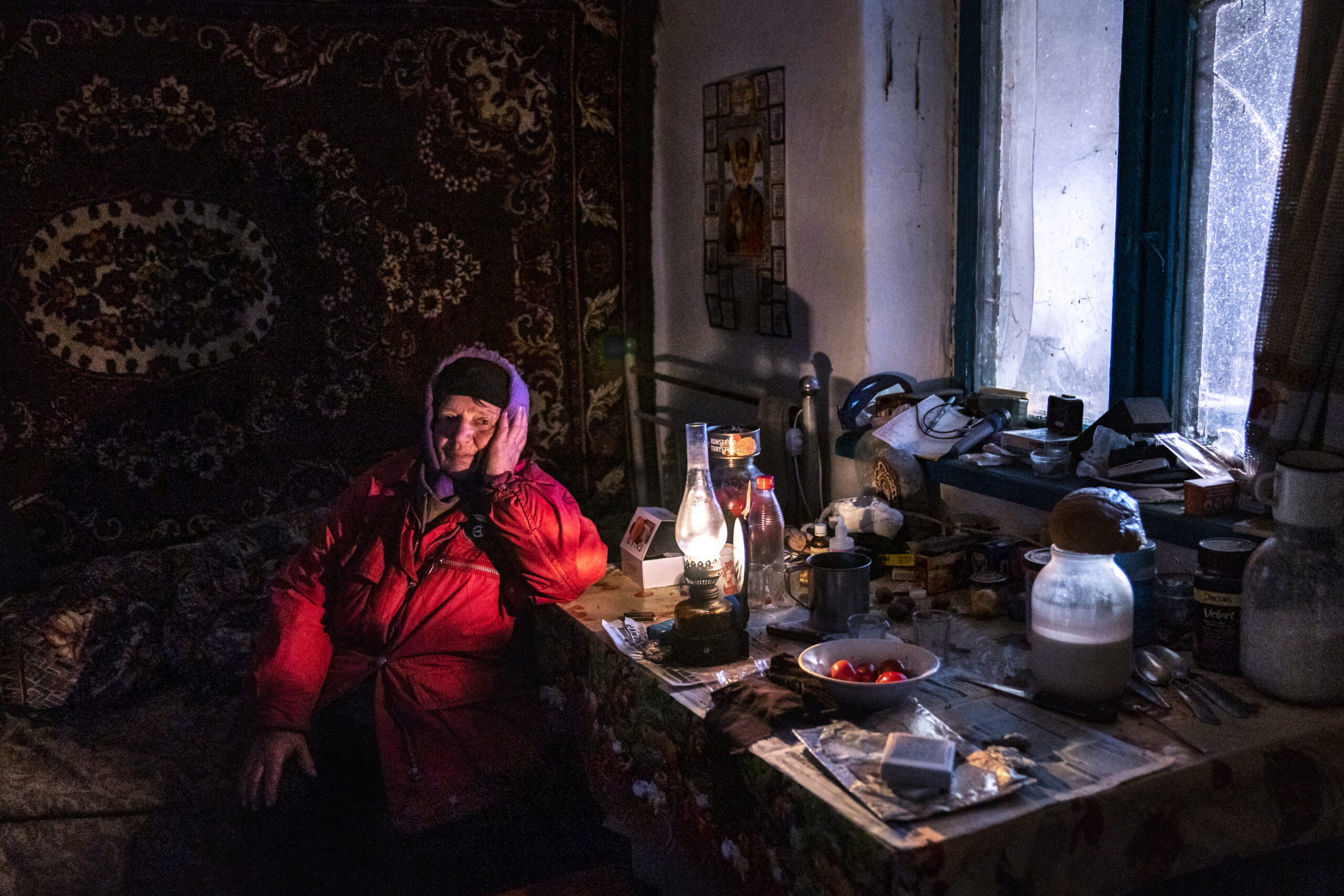
As the full-scale invasion of Ukraine approaches the one-year mark, nearly a third of Ukrainians have been forced to flee their homes. This includes 5.9 million people who are displaced inside the country and who, together with those who have remained in their homes in frontline and other areas, now face plummeting winter temperatures and prolonged electricity and heating outages as the country’s critical infrastructure comes under attack. If the war continues and attacks on electricity, heating and water supplies persist, more people may be pushed to join the 7.9 million Ukrainians who have already sought refuge across Europe. Helping those affected by the war inside Ukraine, including ensuring they have warm and dignified living conditions, will require a massive collective response from government, humanitarian agencies, local partners, international donors, and the private sector.
Galyna, 72, sits near a kerosene lamp in an effort to stay warm. Her home in P’yatykhatky village, in Ukraine’s Kherson region, has no electricity, 19 November 2022. ©UNHCR/Diana Zeyneb Alhindawi
Democratic Republic of the Congo
Far from winding down, one of the world’s longest-running humanitarian crises appears to have entered a new and deadly phase with a rise in attacks on civilians by non-state armed groups, especially in the east of the country. A recent offensive by the M23 armed group has forced nearly 521,000 people to flee their homes in North Kivu Province, contributing to the estimated 5.65 million Congolese who are already displaced inside their country. Another 1 million are living as refugees in other countries across Africa. Funding is not keeping pace with the rising needs: in 2022, UNHCR received less than half of the amount required for its humanitarian response.
A woman recovers in hospital in the DRC’s Ituri Province, after her village was attacked in March 2022. More than a dozen people were killed, including four of her children, 23 March 2022. UNHCR/Hélène Caux © UNHCR/Hélène Caux.
Democratic Republic of the Congo
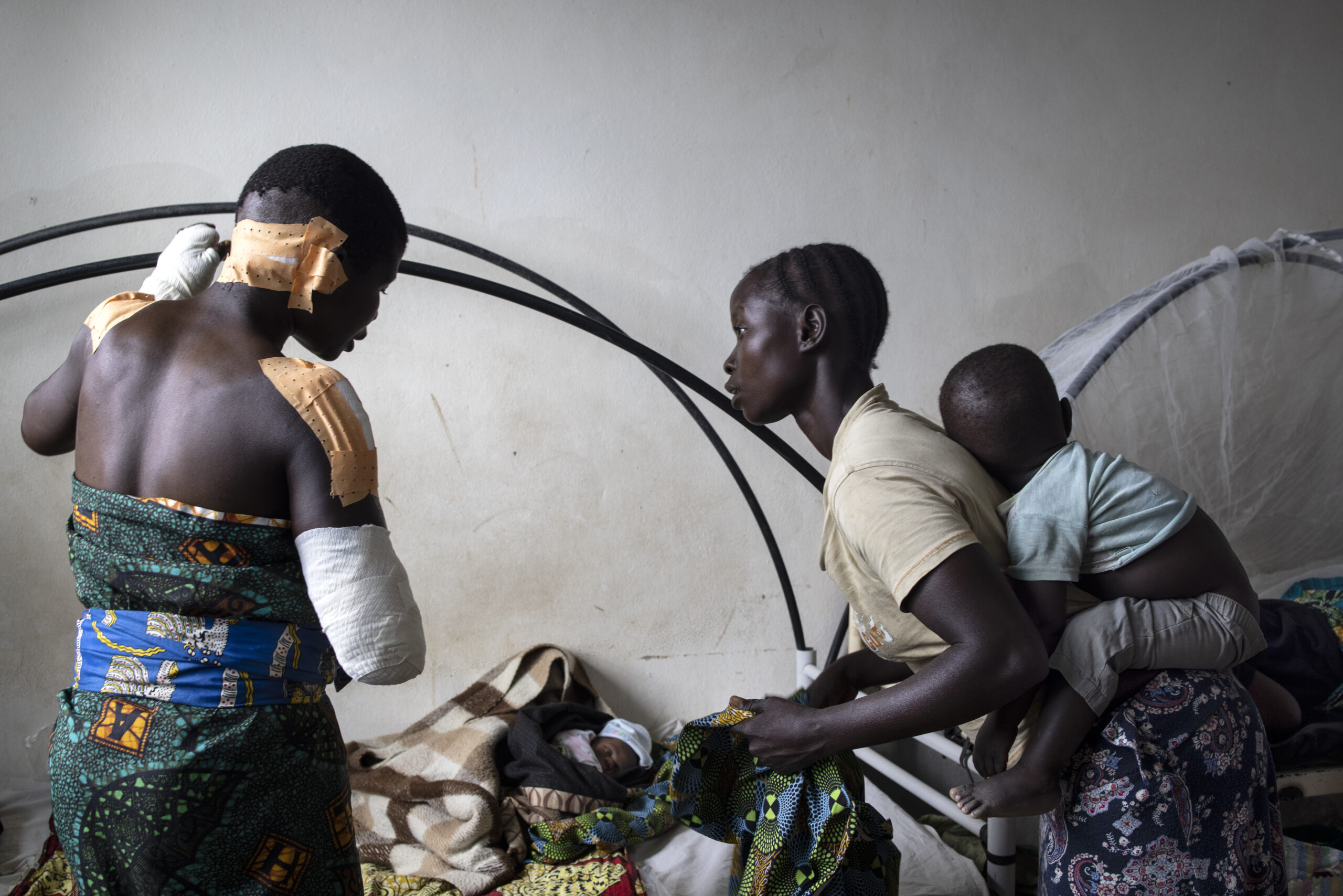
Far from winding down, one of the world’s longest-running humanitarian crises appears to have entered a new and deadly phase with a rise in attacks on civilians by non-state armed groups, especially in the east of the country. A recent offensive by the M23 armed group has forced nearly 521,000 people to flee their homes in North Kivu Province, contributing to the estimated 5.65 million Congolese who are already displaced inside their country. Another 1 million are living as refugees in other countries across Africa. Funding is not keeping pace with the rising needs: in 2022, UNHCR received less than half of the amount required for its humanitarian response.
A woman recovers in hospital in the DRC’s Ituri Province, after her village was attacked in March 2022. More than a dozen people were killed, including four of her children, 23 March 2022. ©UNHCR/Hélène Caux.
Horn of Africa
After four consecutive failed rainy seasons, Somalia and large parts of Kenya and Ethiopia are experiencing their most severe drought in recent history. The consequences have been catastrophic, and are set to worsen into 2023 with the current rainy season also expected to fail. The UN predicts that at least 36.4 million people will be affected across the Horn of Africa with livelihoods lost due to crop failures and livestock deaths. In Somalia, many families are also facing insecurity caused by armed conflict. The combination of drought and conflict has displaced over 1.7 million people inside the country since last January, while thousands more have crossed into northern Kenya to seek aid at the Dadaab refugee camps, and into Ethiopia. In Ethiopia itself, hundreds of thousands have been internally displaced due to the drought and insecurity in the Somali, SNNP, and Oromia regions.
A woman builds a shelter for her family after arriving at the Haya Suftu camp for displaced people in Ethiopia, 22 November, 2022. © UNHCR/Tiksa Negeri
Horn of Africa
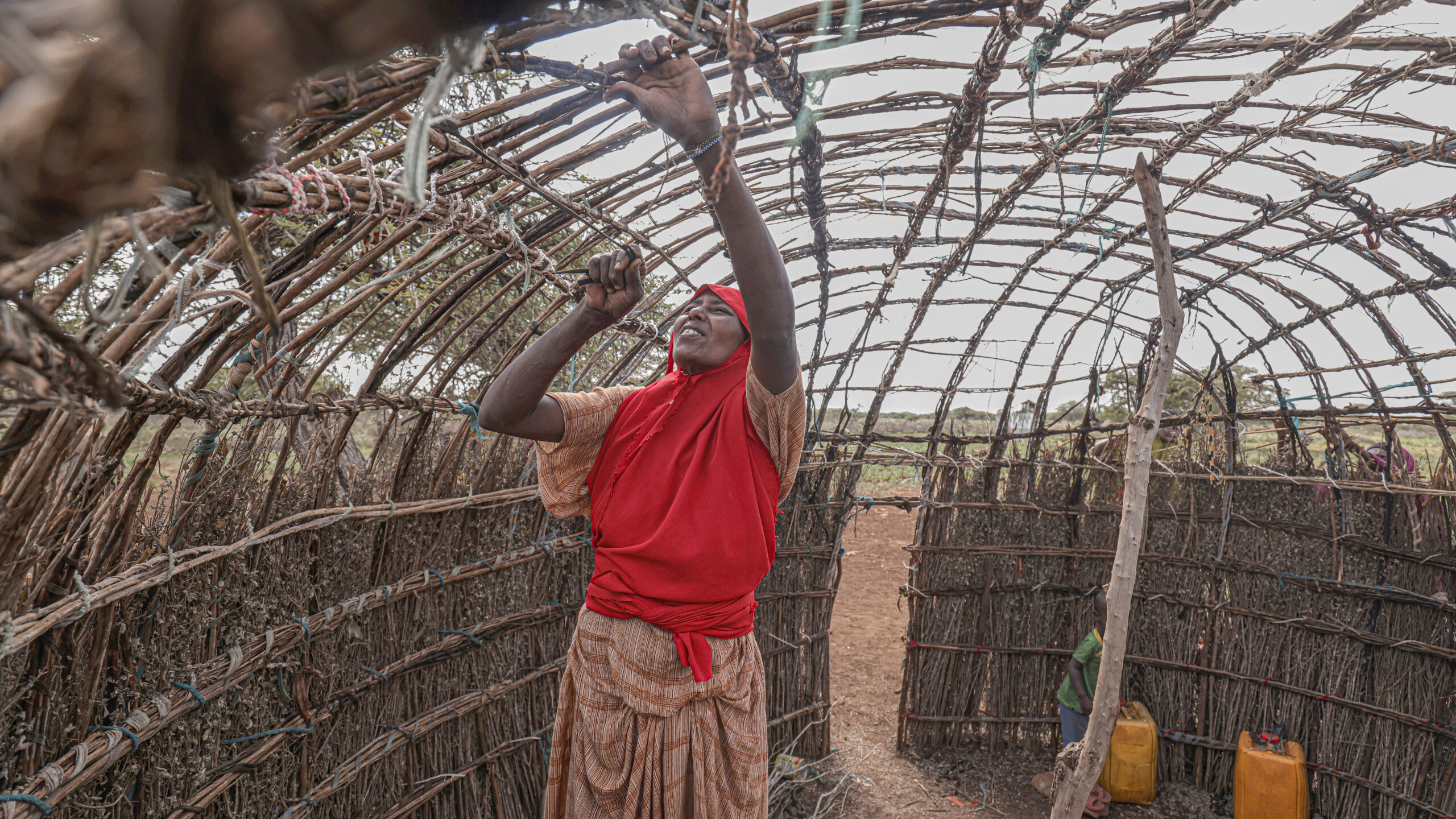
After four consecutive failed rainy seasons, Somalia and large parts of Kenya and Ethiopia are experiencing their most severe drought in recent history. The consequences have been catastrophic, and are set to worsen into 2023 with the current rainy season also expected to fail. The UN predicts that at least 36.4 million people will be affected across the Horn of Africa with livelihoods lost due to crop failures and livestock deaths. In Somalia, many families are also facing insecurity caused by armed conflict. The combination of drought and conflict has displaced over 1.7 million people inside the country since last January, while thousands more have crossed into northern Kenya to seek aid at the Dadaab refugee camps, and into Ethiopia. In Ethiopia itself, hundreds of thousands have been internally displaced due to the drought and insecurity in the Somali, SNNP, and Oromia regions.
A woman builds a shelter for her family after arriving at the Haya Suftu camp for displaced people in Ethiopia, 22 November, 2022. © UNHCR/Tiksa Negeri
US-Mexico border
Following a Supreme Court decision on 27 December to keep in place a COVID-19 public health-related measure that allows US officials to rapidly return asylum seekers attempting to cross the US-Mexico border, thousands remain in a precarious limbo in Mexican border cities. The Supreme Court will hear arguments in March, and the measure will stay in place at least until a decision later in the year. Title 42 affects many people from El Salvador, Guatemala, Honduras and Mexico. Cubans, Nicaraguans, Haitians and Venezuelans have also been added as nationalities impacted following the creation of separate, limited programmes for entry to the US. Movement through the Darien Gap – a treacherous stretch of jungle that separates Colombia and Panama – surged in 2022, with Venezuelans making up by far the largest number risking this dangerous route.
A woman and her two children cross the Rio Grande which runs along the border between Mexico and the US state of Texas, 27 March 2021. © UNHCR/Nicolo Filippo Rosso.
US-Mexico border
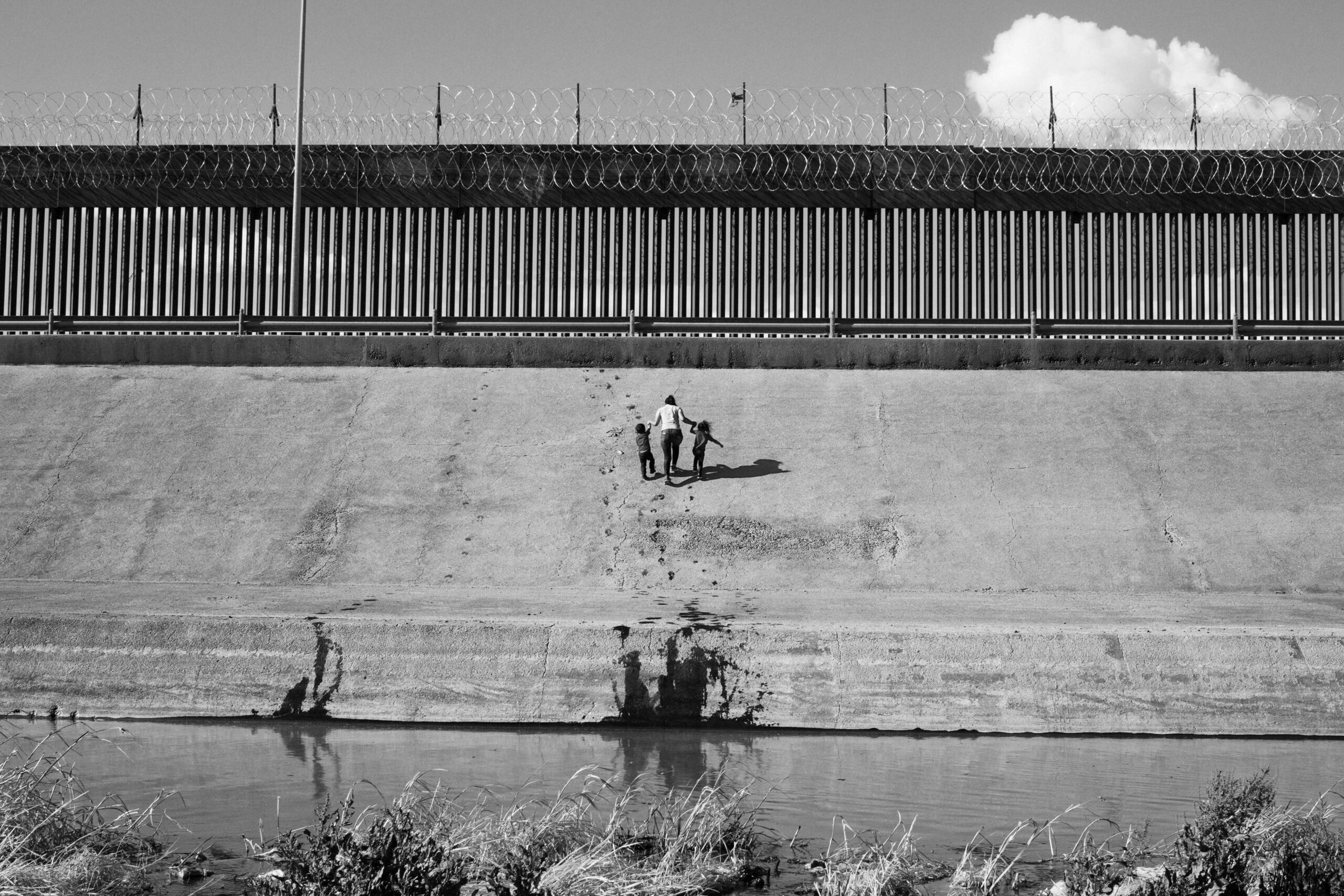
Following a Supreme Court decision on 27 December to keep in place a COVID-19 public health-related measure that allows US officials to rapidly return asylum seekers attempting to cross the US-Mexico border, thousands remain in a precarious limbo in Mexican border cities. The Supreme Court will hear arguments in March, and the measure will stay in place at least until a decision later in the year. Title 42 affects many people from El Salvador, Guatemala, Honduras and Mexico. Cubans, Nicaraguans, Haitians and Venezuelans have also been added as nationalities impacted following the creation of separate, limited programmes for entry to the US. Movement through the Darien Gap – a treacherous stretch of jungle that separates Colombia and Panama – surged in 2022, with Venezuelans making up by far the largest number risking this dangerous route.
A woman and her two children cross the Rio Grande which runs along the border between Mexico and the US state of Texas, 27 March 2021. © UNHCR/Nicolo Filippo Rosso.
Afghanistan
The humanitarian crisis in Afghanistan shows no signs of easing. Conflict may have largely subsided following the Taliban’s takeover 18 months ago, but rising prices, a collapsing economy, and ever-increasing restrictions on the rights of women and girls continue to cause misery for ordinary Afghans. Poverty is endemic, half of the population of more than 40 million people faces acute food insecurity, and more than 3 million people in the country remain displaced from their homes. A recent directive by Afghanistan’s de facto authorities banning women from working for non-governmental organizations is expected to have a major impact on the delivery of critical humanitarian aid, particularly to women and children.
Two sisters carry water to their home on the edge of Kabul. The family fled Nangarhar province three years ago because of fighting between the Taliban and government forces, 6 February 2022. © UNHCR/Andrew McConnell
Afghanistan
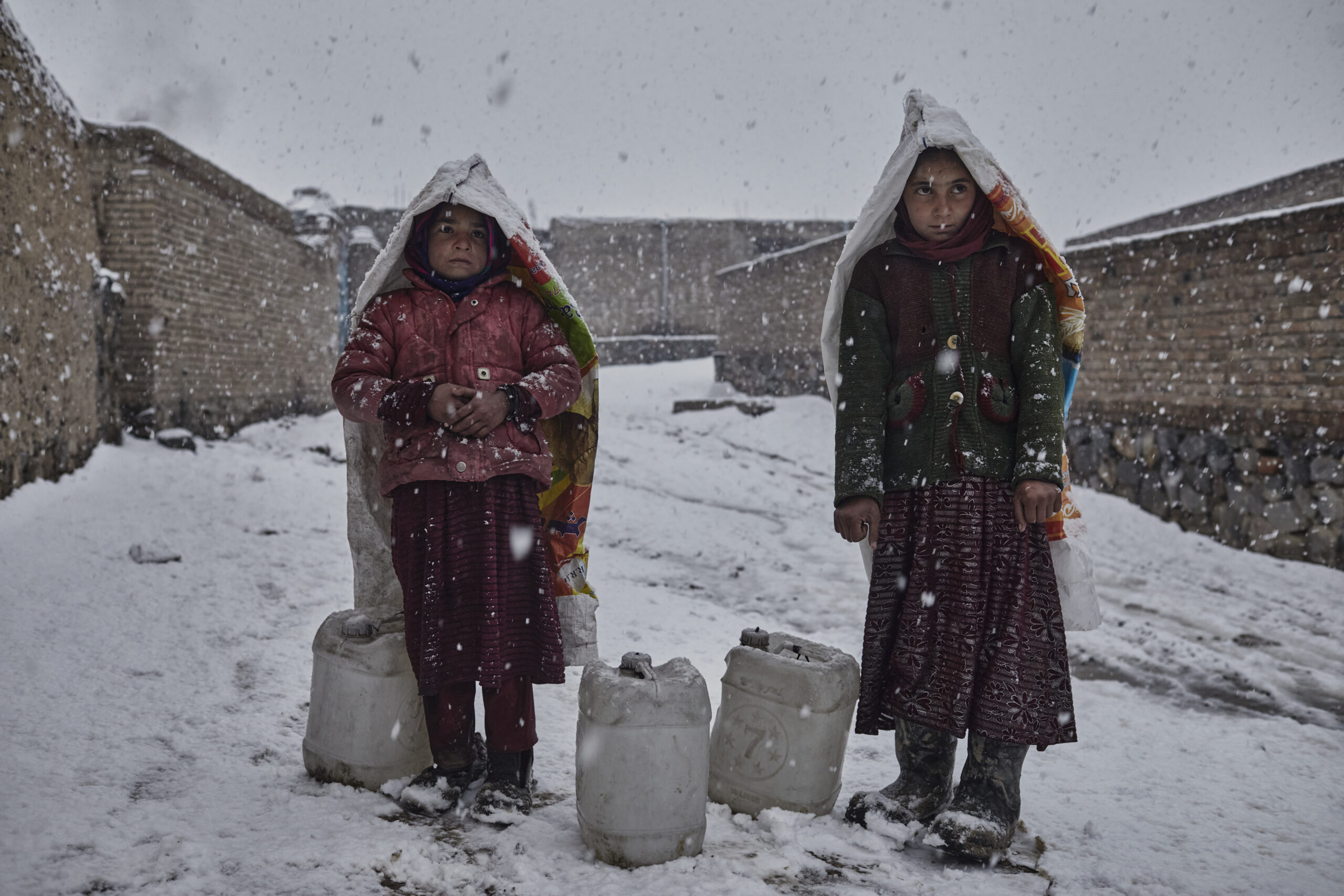
The humanitarian crisis in Afghanistan shows no signs of easing. Conflict may have largely subsided following the Taliban’s takeover 18 months ago, but rising prices, a collapsing economy, and ever-increasing restrictions on the rights of women and girls continue to cause misery for ordinary Afghans. Poverty is endemic, half of the population of more than 40 million people faces acute food insecurity, and more than 3 million people in the country remain displaced from their homes. A recent directive by Afghanistan’s de facto authorities banning women from working for non-governmental organizations is expected to have a major impact on the delivery of critical humanitarian aid, particularly to women and children.
Two sisters carry water to their home on the edge of Kabul. The family fled Nangarhar province three years ago because of fighting between the Taliban and government forces, 6 February 2022. © UNHCR/Andrew McConnell
The Central Sahel
Attacks on both civilians and security forces by extremist groups are likely to continue in Mali, Niger and Burkina Faso, which together make up the Central Sahel region. Besides the ongoing violence, the region faces chronic food shortages, environmental degradation and climate shocks. While much of the displacement in the region has so far been within countries’ own borders, growing numbers are fleeing abroad to find safety further south in Benin, Cote d’Ivoire, Togo and Ghana, further escalating a crisis already affecting some of the most vulnerable people on Earth. In addition to the arrival of refugees, the Sahel conflict has other repercussions for Benin, Cote d’Ivoire and Togo, all of which have been attacked by the same armed groups operating out of Burkina Faso. If these militias continue their advance southward, there is a risk of further instability in West Africa.
Since 2015, the traditional population of Mauritanian farmers and herders living around Lake Mahmouda has witnessed the arrival of fishermen fleeing across the border from Mali, 8 October 2021.© UNHCR/Colin Delfosse
The Central Sahel
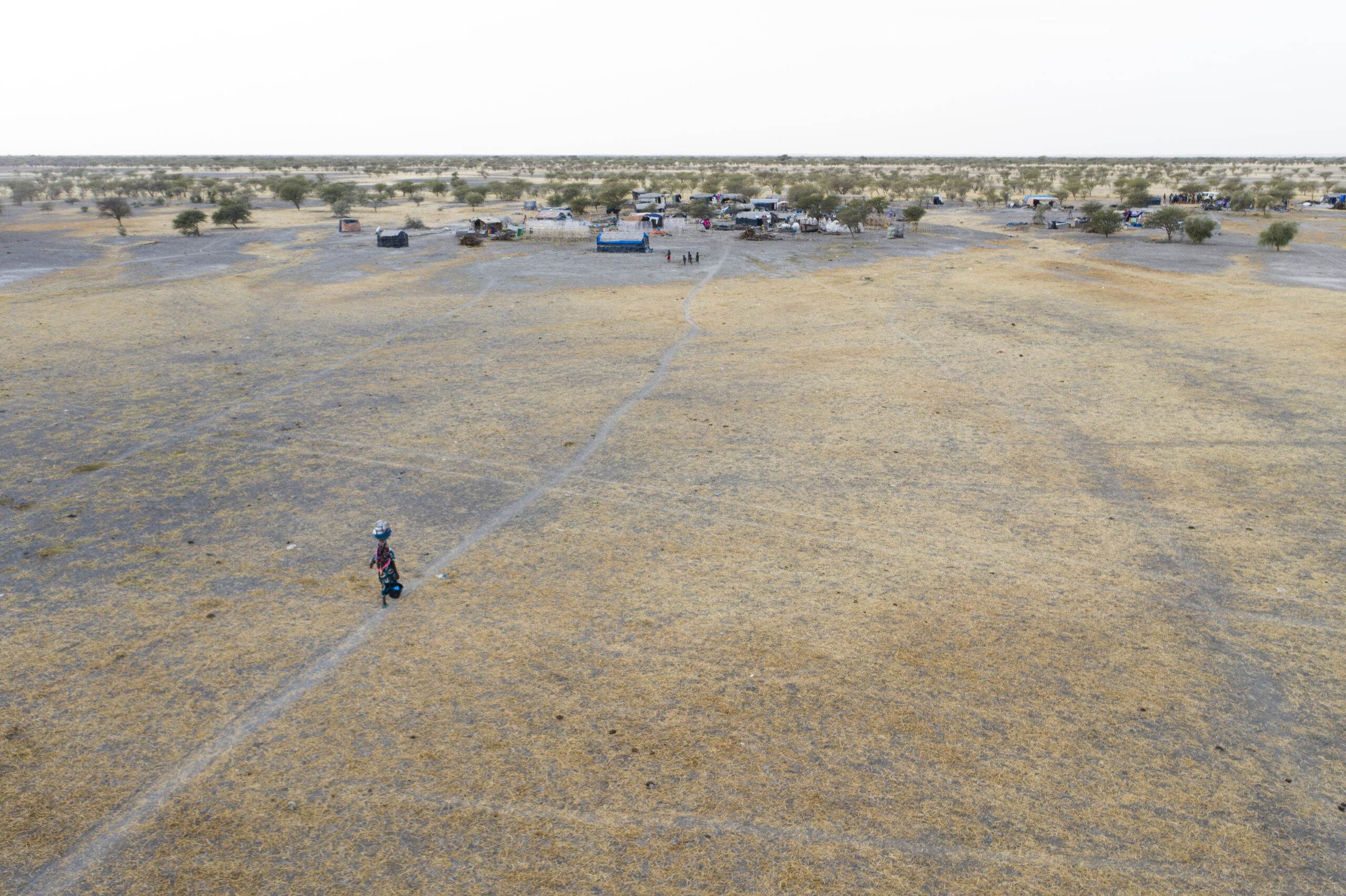
Attacks on both civilians and security forces by extremist groups are likely to continue in Mali, Niger and Burkina Faso, which together make up the Central Sahel region. Besides the ongoing violence, the region faces chronic food shortages, environmental degradation and climate shocks. While much of the displacement in the region has so far been within countries’ own borders, growing numbers are fleeing abroad to find safety further south in Benin, Cote d’Ivoire, Togo and Ghana, further escalating a crisis already affecting some of the most vulnerable people on Earth. In addition to the arrival of refugees, the Sahel conflict has other repercussions for Benin, Cote d’Ivoire and Togo, all of which have been attacked by the same armed groups operating out of Burkina Faso. If these militias continue their advance southward, there is a risk of further instability in West Africa.
Since 2015, the traditional population of Mauritanian farmers and herders living around Lake Mahmouda has witnessed the arrival of fishermen fleeing across the border from Mali, 8 October 2021.© UNHCR/Colin Delfosse
Haiti
In recent months, the humanitarian crisis in Haiti has reached alarming new levels and the turbulence is likely to continue. Heavily armed gangs control 60 per cent of the capital, Port-au-Prince, and all main roads in and out of the city. This has forced thousands of people to flee their homes and prevented humanitarian assistance from reaching those who desperately need it. Almost half the population – 4.7 million Haitians – are facing acute hunger, and cholera has made a comeback throughout the country’s 10 Departments, despite government and UN efforts. Given these overlapping crises, UNHCR has called on states in the region to suspend the forced return of thousands of Haitians who have sought asylum in other countries
A Haitian man carries his son as they cross the border between Mexico and the United States, determined to claim asylum, 28 March 2022. © UNHCR/Nicolo Filippo Rosso
Haiti
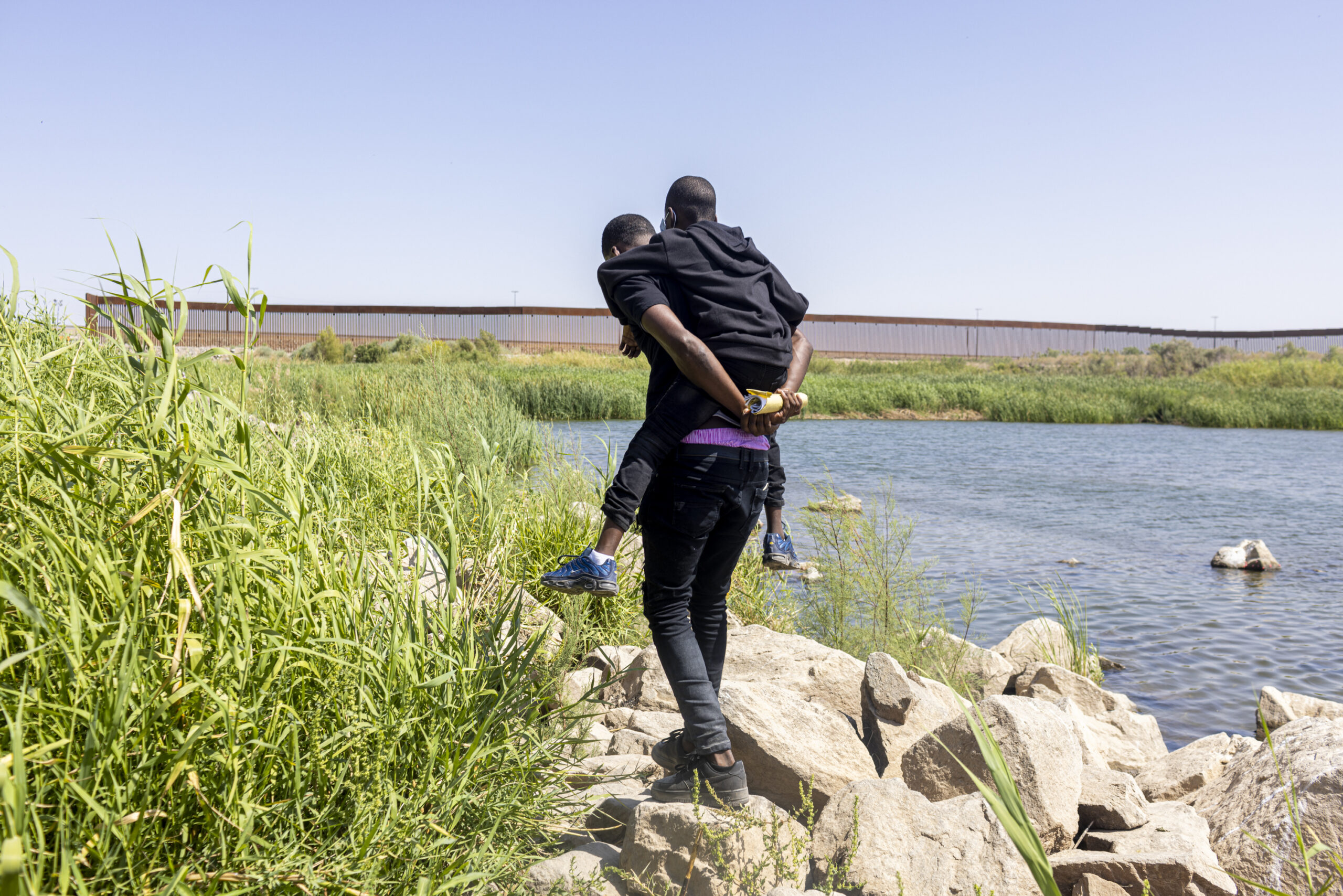
In recent months, the humanitarian crisis in Haiti has reached alarming new levels and the turbulence is likely to continue. Heavily armed gangs control 60 per cent of the capital, Port-au-Prince, and all main roads in and out of the city. This has forced thousands of people to flee their homes and prevented humanitarian assistance from reaching those who desperately need it. Almost half the population – 4.7 million Haitians – are facing acute hunger, and cholera has made a comeback throughout the country’s 10 Departments, despite government and UN efforts. Given these overlapping crises, UNHCR has called on states in the region to suspend the forced return of thousands of Haitians who have sought asylum in other countries.
A Haitian man carries his son as they cross the border between Mexico and the United States, determined to claim asylum, 28 March 2022. © UNHCR/Nicolo Filippo Rosso
Sea crossings
Around the world, sea crossings continue to expose people to grave risks with increasing levels of desperation forcing more refugees to make these dangerous journeys. In 2022, as in previous years, the majority of recorded shipwrecks and deaths at sea occurred in the Mediterranean. But the Andaman Sea, the English Channel, and the Florida Keys all saw an increase in crossings, with fatal consequences – trends that are likely to continue into 2023. Hundreds of asylum seekers came ashore in the Florida Keys over the New Year while since November, 12 boats carrying Rohingya refugees have been reported in the Andaman Sea and the Bay of Bengal. Some have come ashore, but others are still at sea and more than 200 people are feared dead. UNHCR continues to stress the need for greater regional and international cooperation to save lives at sea and share responsibility for those who attempt these journeys.
A boat that carried Rohingya refugees across the Andaman Sea remains anchored offshore after the refugees disembarked in Aceh, Indonesia on 8 January, 2023. © UNHCR/Kenzie Eagan
Sea crossings
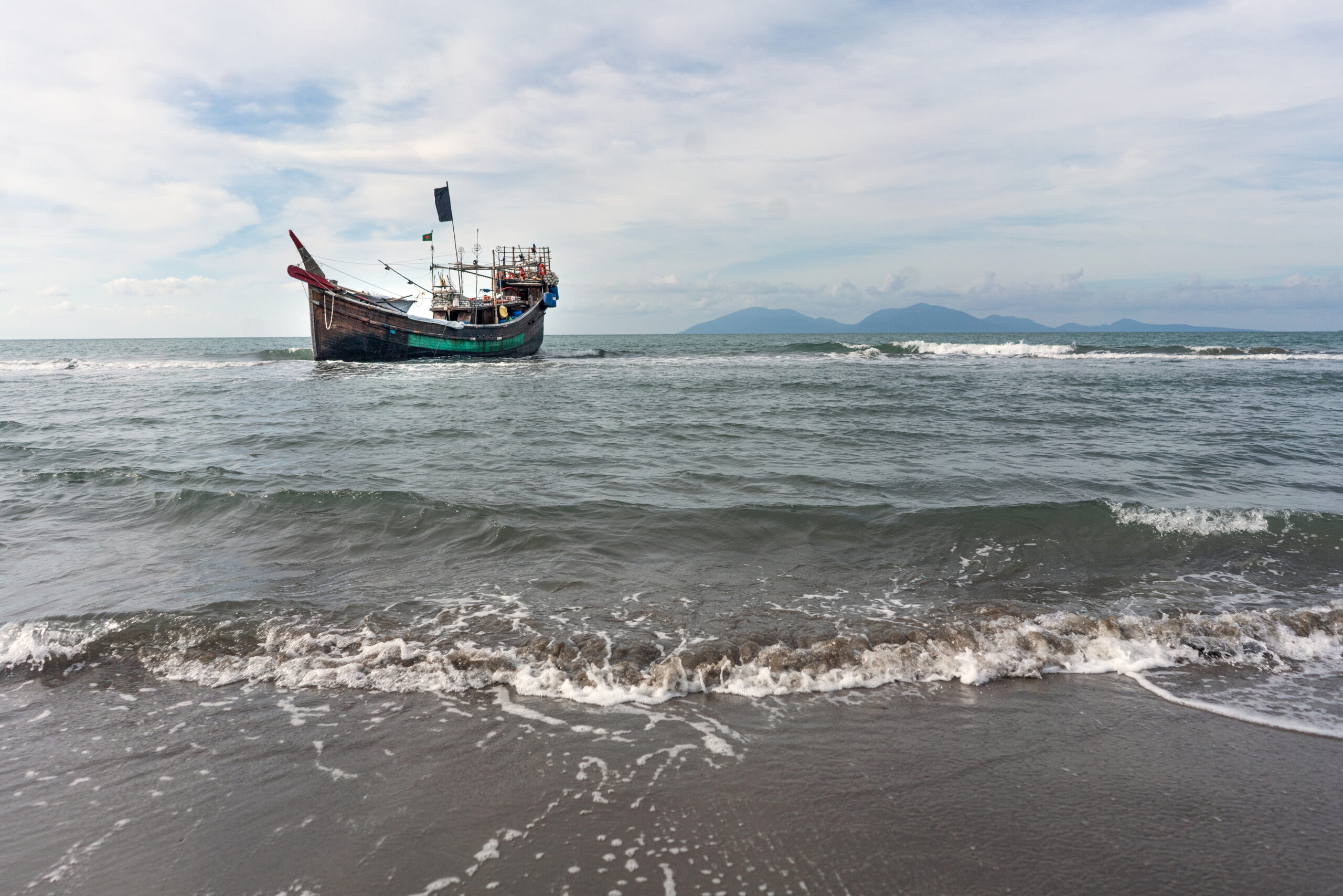
Around the world, sea crossings continue to expose people to grave risks with increasing levels of desperation forcing more refugees to make these dangerous journeys. In 2022, as in previous years, the majority of recorded shipwrecks and deaths at sea occurred in the Mediterranean. But the Andaman Sea, the English Channel, and the Florida Keys all saw an increase in crossings, with fatal consequences – trends that are likely to continue into 2023. Hundreds of asylum seekers came ashore in the Florida Keys over the New Year while since November, 12 boats carrying Rohingya refugees have been reported in the Andaman Sea and the Bay of Bengal. Some have come ashore, but others are still at sea and more than 200 people are feared dead. UNHCR continues to stress the need for greater regional and international cooperation to save lives at sea and share responsibility for those who attempt these journeys.
A boat that carried Rohingya refugees across the Andaman Sea remains anchored offshore after the refugees disembarked in Aceh, Indonesia on 8 January, 2023. © UNHCR/Kenzie Eagan
Food insecurity
The number of people globally who do not have enough to eat is at its highest in modern history, according to the UN, which estimates that at least 222 million people faced acute food insecurity by the end of 2022. The COVID-19 pandemic, the war in Ukraine, the climate crisis and a looming worldwide economic downturn have all combined to hit food supplies and send food and commodity prices skyrocketing. Forcibly displaced people coping with humanitarian crises and their host communities are disproportionately affected. In many countries where UNHCR works, food rations have been cut while there is also less funding for programmes that help refugees to become more self-reliant and less dependent on aid.
A Syrian refugee brings bread to her home in an informal settlement in Lebanon’s Bekaa Valley during a snowstorm. More than 90 per cent of Syrian refugees in Lebanon need humanitarian assistance to survive, 4 February 2022. © UNHCR/Houssam Hariri
Food insecurity
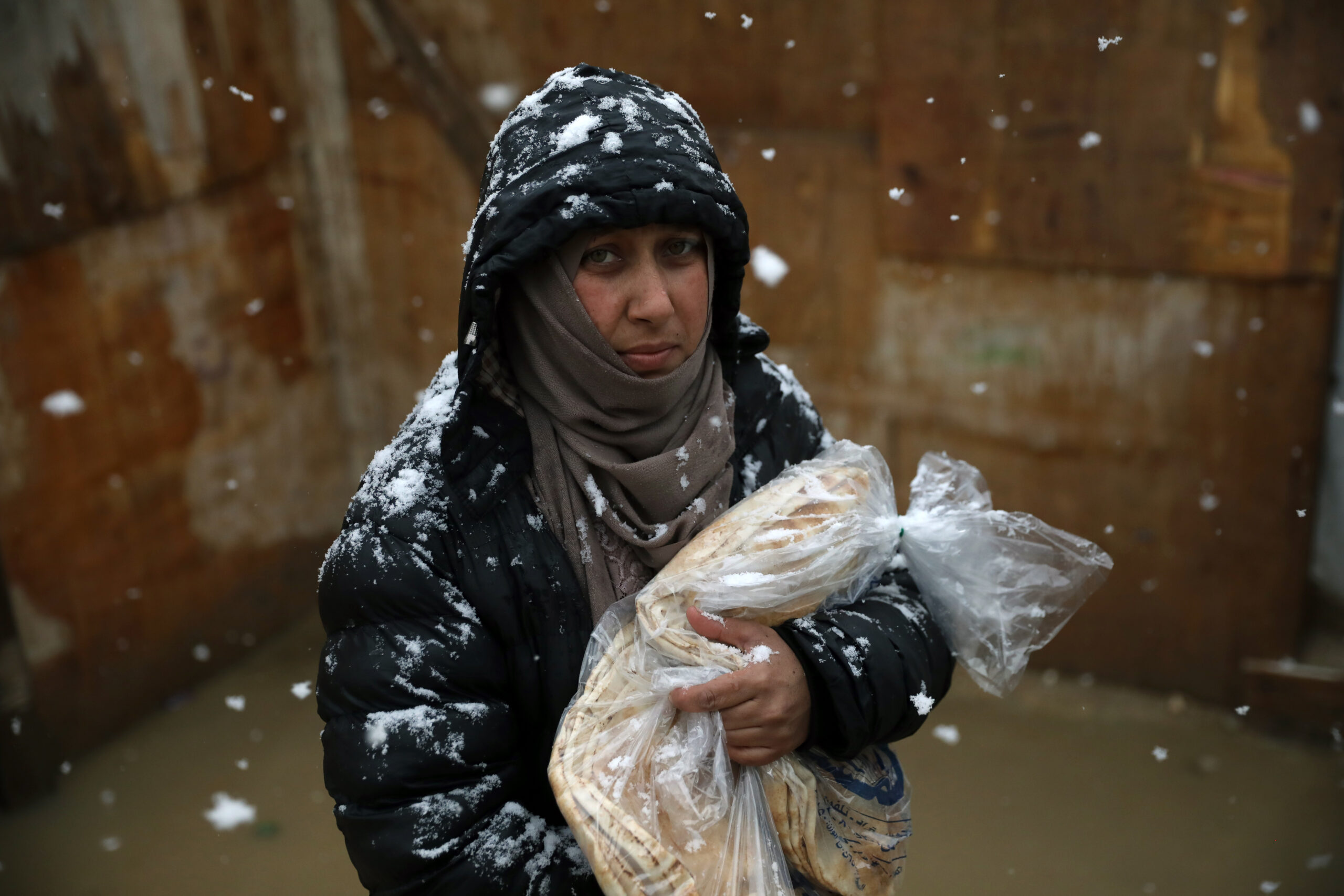
The number of people globally who do not have enough to eat is at its highest in modern history, according to the UN, which estimates that at least 222 million people faced acute food insecurity by the end of 2022. The COVID-19 pandemic, the war in Ukraine, the climate crisis and a looming worldwide economic downturn have all combined to hit food supplies and send food and commodity prices skyrocketing. Forcibly displaced people coping with humanitarian crises and their host communities are disproportionately affected. In many countries where UNHCR works, food rations have been cut while there is also less funding for programmes that help refugees to become more self-reliant and less dependent on aid.
A Syrian refugee brings bread to her home in an informal settlement in Lebanon’s Bekaa Valley during a snowstorm. More than 90 per cent of Syrian refugees in Lebanon need humanitarian assistance to survive, 4 February 2022. © UNHCR/Houssam Hariri
The climate crisis
As global carbon emissions continue to climb, climate change is contributing to humanitarian crises and cycles of displacement around the world. Over 70 per cent of the world’s refugees and internally displaced people come from the most climate-vulnerable countries. They will be among the first to suffer as climate shocks and extreme weather conditions continue into 2023. Helping to prepare them for those shocks and increase their resilience to a changing climate will be more important than ever. Countries and regions that are both climate “hotspots” and affected by conflict or hosting large numbers of forcibly displaced people include Afghanistan, Bangladesh, Pakistan, the Central Sahel, Mozambique, Somalia, Sudan, Syria and Yemen. Displaced people have called for a seat at the table at the next UN climate summit – COP28 – taking place in Dubai from late November.
Cholul Jock reinforces a hand-built dyke to protect her family from rising water in Fangak, South Sudan. They have been displaced by floods multiple times, 8 March 2022. © UNHCR/Samuel Otieno
The climate crisis
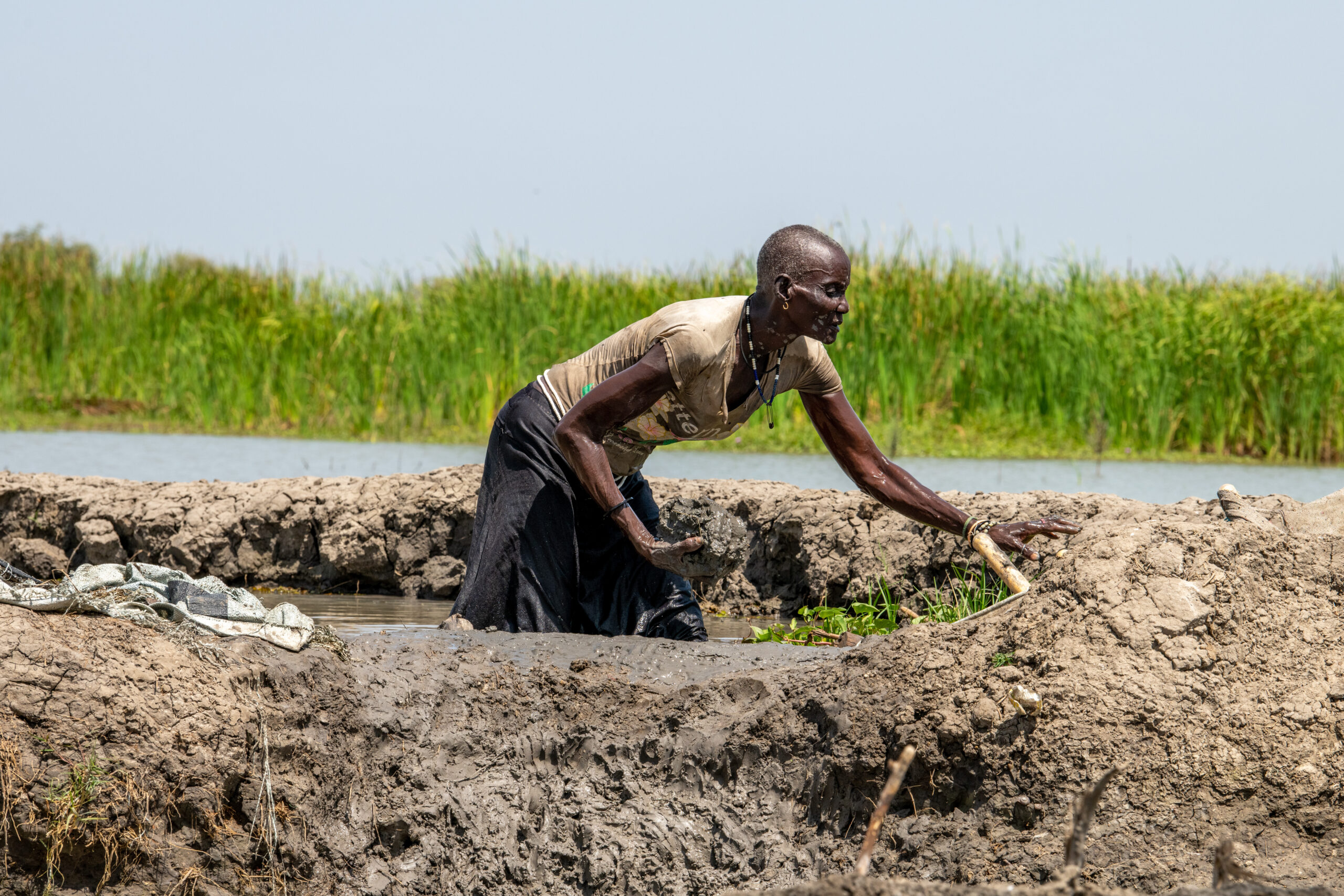
As global carbon emissions continue to climb, climate change is contributing to humanitarian crises and cycles of displacement around the world. Over 70 per cent of the world’s refugees and internally displaced people come from the most climate-vulnerable countries. They will be among the first to suffer as climate shocks and extreme weather conditions continue into 2023. Helping to prepare them for those shocks and increase their resilience to a changing climate will be more important than ever. Countries and regions that are both climate “hotspots” and affected by conflict or hosting large numbers of forcibly displaced people include Afghanistan, Bangladesh, Pakistan, the Central Sahel, Mozambique, Somalia, Sudan, Syria and Yemen. Displaced people have called for a seat at the table at the next UN climate summit – COP28 – taking place in Dubai from late November.
Cholul Jock reinforces a hand-built dyke to protect her family from rising water in Fangak, South Sudan. They have been displaced by floods multiple times, 8 March 2022. © UNHCR/Samuel Otieno
Statelessness
At least 4.3 million people around the world remain without a nationality, often despite having been born in, and spending their whole lives in, the same country. Without citizenship, they are caught in legal limbo and often excluded from formal employment, education and health care. In 2023, UNHCR will enter the final two years of its decade-long #IBelong campaign to end statelessness, with a focus on 28 priority countries including Albania, Burkina Faso, Colombia, Iraq, Kenya, Myanmar and Thailand. To build on these efforts, in 2023 UNHCR will also launch a new Global Alliance to End Statelessness, bringing together key organizations and stakeholders – including stateless and formerly stateless people themselves – to advance solutions to the issue by 2030.
Hassinah Begom, a Rohingya midwife, lives in a camp for internally displaced people in Myanmar’s western Rakhine State. The Rohingya have been denied equal access to citizenship and essential services, 5 August 2022. © UNHCR/Reuben Lim Wende
Statelessness
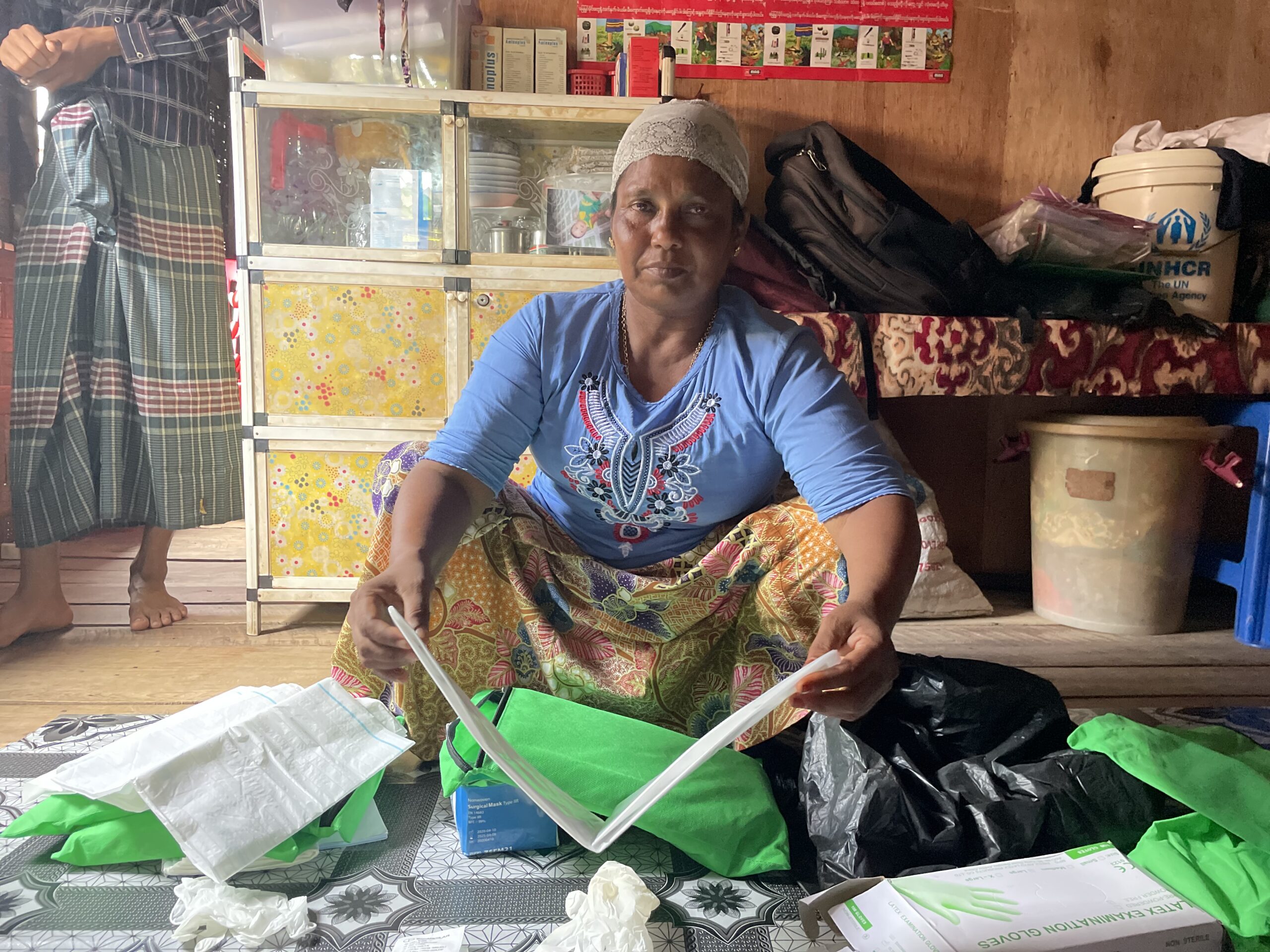
At least 4.3 million people around the world remain without a nationality, often despite having been born in, and spending their whole lives in, the same country. Without citizenship, they are caught in legal limbo and often excluded from formal employment, education and health care. In 2023, UNHCR will enter the final two years of its decade-long #IBelong campaign to end statelessness, with a focus on 28 priority countries including Albania, Burkina Faso, Colombia, Iraq, Kenya, Myanmar and Thailand. To build on these efforts, in 2023 UNHCR will also launch a new Global Alliance to End Statelessness, bringing together key organizations and stakeholders – including stateless and formerly stateless people themselves – to advance solutions to the issue by 2030.
Hassinah Begom, a Rohingya midwife, lives in a camp for internally displaced people in Myanmar’s western Rakhine State. The Rohingya have been denied equal access to citizenship and essential services, 5 August 2022. © UNHCR/Reuben Lim Wende
Global Refugee Forum
The first Global Refugee Forum in 2019 brought together governments, refugees, local authorities, international organizations, civil society and the private sector to deliver more comprehensive, sustainable responses to refugee situations, based on the principle of more equitable burden- and responsibility-sharing, as outlined in the Global Compact on Refugees. Four years on, stakeholders will return to Geneva in December for the second Global Refugee Forum, where they will assess implementation of the 1,673 pledges and nearly 50 initiatives launched since the first forum and announce new pledges, including financial and technical support and policy approaches. The outcome will contribute to strengthening the global response to record levels of displacement and the search for solutions.
Refugees and asylum seekers attending the Global Refugee Forum play football on the lawn at the Palais des Nations, 18 December 2019. © UNHCR/Andrew McConnell
Global Refugee Forum
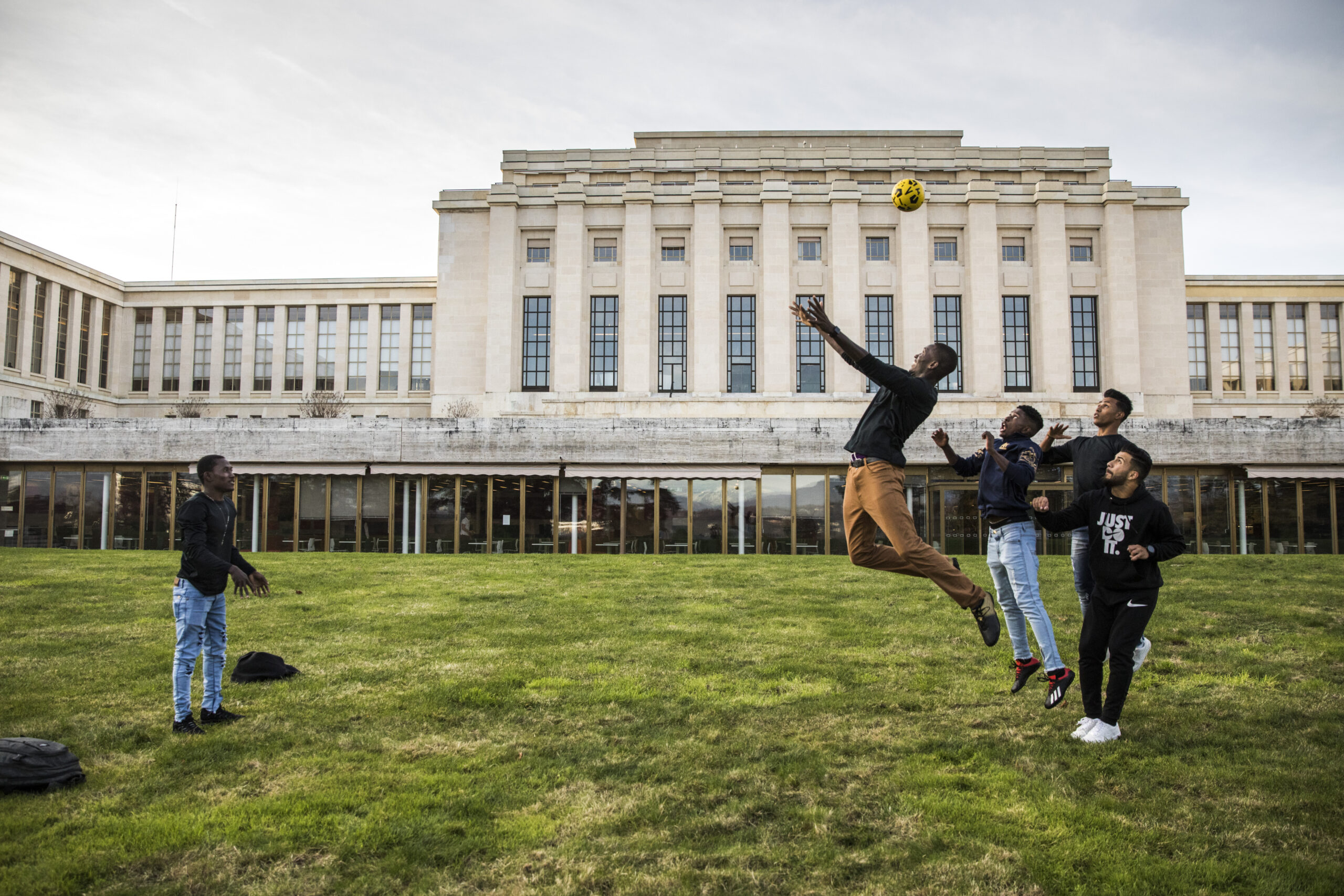
The first Global Refugee Forum in 2019 brought together governments, refugees, local authorities, international organizations, civil society and the private sector to deliver more comprehensive, sustainable responses to refugee situations, based on the principle of more equitable burden- and responsibility-sharing, as outlined in the Global Compact on Refugees. Four years on, stakeholders will return to Geneva in December for the second Global Refugee Forum, where they will assess implementation of the 1,673 pledges and nearly 50 initiatives launched since the first forum and announce new pledges, including financial and technical support and policy approaches. The outcome will contribute to strengthening the global response to record levels of displacement and the search for solutions.
Refugees and asylum seekers attending the Global Refugee Forum play football on the lawn at the Palais des Nations, 18 December 2019. © UNHCR/Andrew McConnell
